Pongal is an important festival in India, with prayers to the Sun God on this occasion. Pongal is one of such highly revered festivals celebrated in Tamil Nadu to mark the harvesting of crops by farmers. The house is cleaned, and all maintenance jobs are done before this festival.
Pongal Harvest Festival:
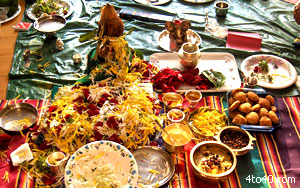
Held in the middle of January, it is the time when the people get ready to thank God, Earth and their Cattle for the wonderful harvest and celebrate the occasion with joyous festivities and rituals. During the four-day festival, different varieties of Rangoli are drawn in front of the houses early in the morning.
In North India, it is known as Sankaranti.
Meaning of Pongal:
Pongal is a harvest festival – the Tamil equivalent of Thanksgiving. It is held to honor the Sun, for a bountiful harvest. Families gather to rejoice and share their joy and their harvests with others. The Sun is offered a “Pongal” of rice and milk.
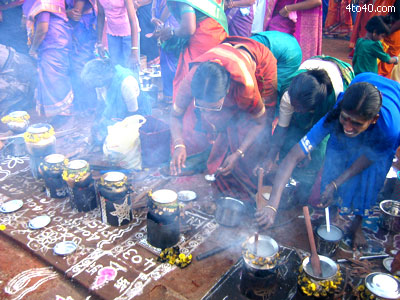
Literally meaning “Boiling over”, Pongal, signifies the advent of prosperity. Pongal is normally celebrated over a period of four days, starting on the 13th January. Since the calculation to determine the day is based on the solar calendar, the date doesn’t change. It is considered a very auspicious occasion when the Sun transits the Capricorn sign. A rich and abundant harvest of paddy and other crops depend on the availability of good rain, as most of the rivers in Tamil Nadu are not perennial. Hence, there is the invocation of the Sun God and the God of Rain at the time of Pongal.
The period is referred to as Uttarayan Punyakalam and is considered auspicious. Legend has it that the Devas wake up after a six-month long slumber during this period. And so it is believed that those pass away during Uttarayana attain salvation. In fact, Bheeshma is believed to have waited for the dawn of Uttarayana before he gave up his life.
As is customary, cleaning of every house a few days prior to the Pongal festival is an indispensable ritual. Not only every house is cleaned, but it is also dusted and whitewashed. Wearing new clothes on Pongal is also customary. Attired in a new “Lehanga” and half sari for young girls and lungi and angavastram, the men, women and children prepare themselves for celebrating the first day called Bhogi Pandigai. This day is dedicated to Indra, who is also called Bhogi. It is believed that on this day Lord Krishna had urged the people to neglect Indra and not worship him. People take oil bath on this day. Using rice paste “Kolam” is drawn and this represents the Sun. The items that are generally used to celebrate Pongal; Sandalwood paste, vermilion, mango saplings, coconut fronds, sugarcanes, banana leaves, ginger pieces, white flour, new vessels for cooking, turmeric, and a “thali” or metal plate in which the sun is viewed.
Pongal is a four-day affair:
The first day, Bhogi, is celebrated on the last day of the month of Margazhi. Scholars have often compared Bhogi to the Indra Vizha celebrated by the Chola kings at Kaveripattinam, also known as Poompuhar. Indra Vizha was celebrated in honour of Lord Indra, also called Bhogi, the God of thunder and rain.
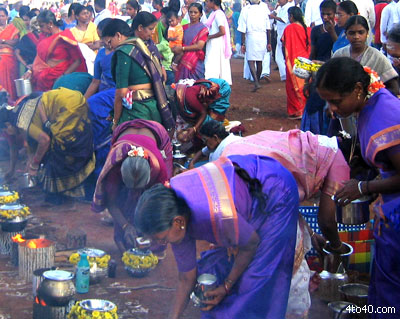
The second day is Surya Pongal also called Perum Pongal. It is the most important day and people worship Surya, the Sun God and his consorts, Chaya and Samgnya. There are several legends associated with Surya Pongal. A sage named Hema prayed to Lord Vishnu on the banks of the Pottramarai tank in Kumbakonam. On Surya Pongal day, the lord is believed to have taken the form of Sarangapani and blessed the sage. Yet another legend has it that Lord Shiva performed a miracle where a stone image of an elephant ate a piece of sugarcane.
The third day is Mattu Pongal, celebrated to glorify cattle that help farmers in a myriad ways. On this day, the cows are bathed and decorated with vermilion and garlands and fed.
Fourth day – the last day is Kaanum Pongal. It is that part of the festival when families used to gather on the riverbanks and have a sumptuous meal (kootanchoru). It is also time for some traditional dances such as kummi and kolattam. In recent years, that day is celebrated as Uzhavar Tirunal in honor of farmers.
The dishes prepared during these days are “Sarkarai Pongal”, “Ven Pongal”, Dosai and Sambhar, Vadai and Payasam (a sweet rice pudding).
Pongal Rituals:
A typical traditional Pongal celebration has a number of rituals attached to it. The preparations for the festival are quite elaborate. The place where the Pongal puja is to be performed is cleaned and smeared with dung, a day prior to the festival. The place chosen for this purpose usually happens to be in the courtyard or an open terrace. Kolams (ground patterns made out of rice flour) generally drawn with rice flour are special to the occasion. The idea behind using rice flour is that the insects would feed on it and bless the household. The kolam also bears sociological significance and is even today religiously performed daily as a threshold ceremony before dawn in traditional Tamil homes. The Sankranti Rath (chariot) is a typical Pongal kolam. The ropes of the rath are supposed to be kept open till on the next day they are “joined” from house to house to symbolize a collective desire to realize an uninterrupted cosmic cycle. At the centre of it a lump of cow dung holds a five petal pumpkin flower, which is regarded as a symbol of fertility and an offering of love to the presiding deity.
Legends:
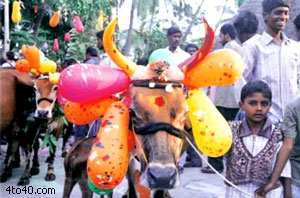
Like many other Indian festivals, this festival also has a few interesting legends attached to it signifying the importance it holds. The most popular legend is the one connected to the first day of the Pongal celebration when the Rain God, Bhogi or Indra is worshiped. According to the legend, on this day Lord Krishna lifted the Govardhan Mountain on his little finger to shelter his people and save them from being washed away by the rains and floods.
Another legend is associated with the third day of Pongal celebration, also known as Mattu Pongal. According to it, Lord Shiva once asked Nandi, his bull, to go to earth and deliver his message to the people – to have an oil bath every day, and food once a month. But Nandi got it all mixed up when he delivered the message, and told the people that Shiva asked them to have an oil bath once a month, and eat every day. Shiva was displeased, and told Nandi that since the people would now need to grow more grain, Nandi would have to remain on earth and help them plough the fields. Mattu Pongal is also called Kanu Pongal, and women pray for the welfare of their brothers. This is similar to the festivals of Raksha Bandhan and Bhai Dooj celebrated in some states of North India.
Celebrations:
As the January chill sets in, the joy of Pongal resounds the air. Pongal is celebrated on January 14th every year and is also one of the longest celebrations in the Tamil calendar, spread over four days.
The festival of Pongal is held dear particularly by the farming community as it marks the end of harvesting season. The markets start receiving stacks of sugarcane, turmeric saplings and a horde of farm produces. The run-up to Pongal is as exciting as celebrating the occasion that is believed to ring in prosperity.
Pongal is celebrated for four days and the celebrations on the first day of the Tamil month Thai and continues for the three days. The month of Thai is supposed to be very auspicious for every kind of activity. The Sun is worshiped for his rays are responsible for the life on earth.
It is the biggest harvest festival, spread over four days. ‘Bhogi’ is celebrated on January 13, ‘Pongal’ on January 14, ‘Mattu Pongal’ on January 15, and ‘Thiruvalluvar Day’ on January 16.
The name of the festival is derived from Pongal, a rice pudding made from freshly harvested rice, milk and jaggery. The first day, “Bhogi Pongal”, is a day for the family. “Surya Pongal”, the second day, is dedicated to the worship of Surya, the Sun God. The third day of Pongal, “Mattu Pongal”, is for the worship of the cattle.
Cattle are bathed, their horns polished and painted in bright colors, and garlands of flowers placed around their necks. Pongal is associated with cleaning and burning of rubbish, symbolizing the destruction of evil.
All the four days of Pongal have there own individual significance. On the first day, delicious preparations are made and homes are washed and decorated. Doorways are painted with vermilion and sandalwood paste with colorful garlands of leaves and flowers decorating the outside of almost every home. On this day ‘Bhogi’ or the Rain God is worshiped.
Rituals Followed:
A typical traditional celebration has a number of rituals attached to it. The place where the Pongal Puja is to be conducted is cleaned and smeared with dung, a day prior to the festival. People generally choose an open courtyard for this purpose.
‘Kolams’ (Rangoli) generally drawn with rice flour are special to the occasion. The idea behind using rice flour is that the insects would feed on it and bless the household. At the center of it a lump of cow dung holds a five-petal pumpkin flower, which is regarded as a symbol of fertility and an offering of love to the presiding deity. In a similar way the houses are also cleaned, painted and decorated. Kolams (Rangoli) are made in the front yards of the houses and new clothes for the whole family are bought to mark the festivities. Even the cattle are gaily caparisoned with beads, bells and flowers-their horns painted and capped with gleaming metals.
The Tempting Recipes:
Sweet rice, known as “Pongal”, is cooked in a new earthenware pot at the same place where puja is to be performed. Fresh turmeric and ginger are tied around this pot. Then a delicious concoction of rice, Moong Dal, jaggery and milk are boiled in the pot on an open fire. This Pongal, according to ritual, is allowed to boil and spill out of the pot. Pongal, once ready, is offered to God first, on a new banana leaf along with other traditional delicacies like Vadas, Payasam, etc. Besides this, sugarcane, grain, sweet potatoes, etc are also offered to the Sun God.
Processions:
A procession is taken out from the Kandaswamy (also spelt as Kandaswami) Temple in Chennai. In Madurai, Tanjore and Tiruchirappalli, where Pongal is known as Jallikattu, bundles of money are tied to the horns of bulls, and villagers try and wrest the bundles from them. Community meals are made from the freshly gathered harvest and enjoyed by the entire village.
 Kids Portal For Parents India Kids Network
Kids Portal For Parents India Kids Network
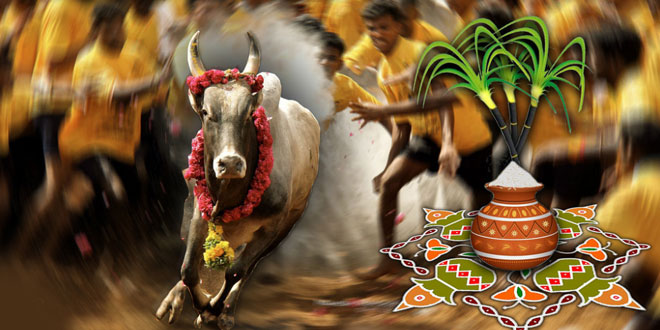

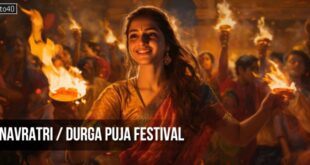
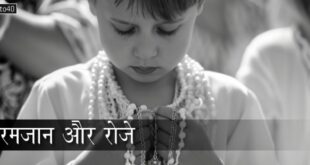
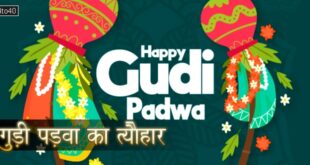
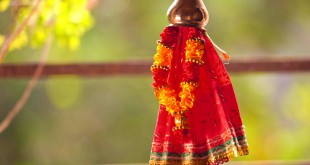
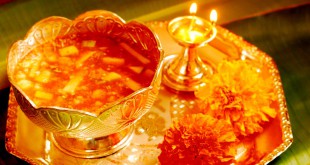
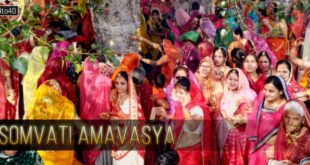
One comment
Pingback: Pongal Facebook Covers: Tamil Nadu Harvest Festival FB Banners - Kids Portal For Parents